
Meet the first cohort of TED-Ed Innovative Educators!
Brazil. Indonesia. South Korea. These are just three of the 11 countries represented by the founding cohort of 28 TED-Ed Innovative Educators. [Learn more about the TED-Ed Innovative Educator program here.] As leaders within TED’s global network of over 250,000 teachers, these innovative educators are dedicated to making the world better for learners everywhere by helping people make the most of TED’s free tools for teachers and students — including TED-Ed Animated Lessons, TED-Ed Clubs and the TED-Ed Platform. Throughout the year-long program, this outstanding community will connect regularly across time zones and national borders to explore, create and share idea-based innovations that spark student curiosity. Below, meet the first cohort of TED-Ed Innovative Educators as they embark on their TED-Ed innovation and leadership adventures — and learn why TED is so inspired by educators busting at the seams to innovate in big and small ways:
What does innovation in education look like to you?
We asked the TED-Ed Innovative Educators. Read their inspiring answers:
Vicki Albritton, Georgia, USA
“Innovation in education must include the student voice. Innovation means that risk-taking is OK and that failure isn’t the end. Innovation is often messy — scary and beautiful and nerve-wracking and exhilarating, all at the same time.”
Mahrukh Bashir, Depok, Lazuardi, INDONESIA
“When talking about creativity and innovation in education, the name of one of my favorite educators — Sir Ken Robinson — always crops up. He says that what we are doing now, or have done in the past, need not determine what we can do next, or in the future. Thus, to me, innovation in education means looking beyond past and current ideas to search for ideas that will work in the future. That is the world in which our learners will live.
Shannon Brake, Kansas, USA
“We ask so much of our students: to be brave, compassionate, tenacious problem-solvers. I often wonder, ‘Am I all that I ask my students to be?’ If we expect innovation in the classroom, we have to project and live a growth mindset, to overcome doubt and fear of failure. Innovation and technology are not interchangeable terms. To me, innovation is anything that takes a broken or stagnant system and makes an attempt to remedy it. It means not falling back on the comfort of, ‘But we have always done it this way.’ Instead of complaining about what is not working in education, it means becoming part of the solution — one small step at a time.
Nola-Rae Cronan, Michigan, USA
Innovation in education is about helping students make meaningful connections to what they’re learning. “I was the kind of kid who pushed boundaries. I felt disengaged in school and unchallenged — only then, I called it being bored. Mrs. Rubinstein was one of the few teachers who, I felt, got me. There were many instances where I felt she went out of her way in the classroom to give me extra work, give me a kind word, or encourage some of my more ‘exotic’ hobbies. I never forgot how much she worked to make meaningful connections for me. My goal as a teacher and dean, each day, is to make connections with my students as Mrs. Rubinstein did with me. She made me feel intelligent and worthy of my place in school. She, and other teachers like her, made school worth it. I want to be that person, for each and every student who walks through my door.”
Dylan Ferniany, Alabama, USA
Innovation in education is about social change. “My mom was a gifted education teacher, and originally I was going to teach until I found out what I wanted to do. Once I got into it, I loved it! After working on my Ed.D. in policy I became more interested in education as an agent of social change. While one or two experiences led me to become a teacher, about a thousand have led me to stay a teacher. As an administrator, I try to create these experiences for my teachers and students by keeping current on the best programs and innovative practices out there and bringing them home to Birmingham.”
Eduardo Godoy, Sao Paulo, BRAZIL
It’s about embracing constraints. “I became a teacher because I wanted to create new opportunities for people to learn. It all started when I returned from the US in 1984. Although I had spent three years there, I felt I still had a lot to learn, so I started to look for a school. As I lived in a small town, opportunities were scarce, so I was invited to teach in a school near my house with the promise that I would learn a great deal while teaching. I indeed learned, and I got hooked on teaching. Nowadays, I have two daughters. The older one was my inspiration to get a college degree to teach language. Today I try to help all my students learn more about the world.”
Karen Goepen-Wee, Alberta, CANADA
“Innovation in education happens when educators ask, ‘How can I make this real, relevant, interesting, student-centric and personalized?’ When we design our learning experiences around these five components, I believe we will begin to create the change and learning we all want to see. If we keep this question in mind, then policies, decision-making, technology use and resource allocation will follow suit. However, I’m beginning to realize that it is actually not hard to make change in the small and safe confines of my classroom. The trick is to go out there into our possible spheres of influence and address the issues we care so deeply about. That will take grit, ingenuity, tenacity, patience and dialogue. We will have to know all the arguments against innovation and counter those arguments with facts and evidence.”
Will Gourley, Ontario, CANADA
“Innovation is fearless. It is able to ignore what’s been done in the past in order to reimagine what education can be in the future. It can extract the best of what worked while integrating and repurposing it for modern learners. Innovation begins with an understanding of the learner first, and tailors the content to suit their learning styles, needs and goals. It allows teachers to be guides on the sides in order to put the experience into the hands of those preparing to inherit the future. Innovation is centered around growth, process and reflection.”
Malgorzata Guzicka, Legnica, POLAND
“Innovation is a continuous process. It involves continuous learning (also from our students). It involves searching for ideas, collaborating with other teachers, and keeping students engaged and motivated. It helps us to stay motivated and engaged.”
Sharon Hadar, Raanana, ISRAEL
“Innovation in education is about thinking ‘outside of the box’ and giving students and teachers the conditions to do so. It means to me that any question is a legitimate one. It means feeling safe enough to share an idea with colleagues and students, and to ask for their honest opinion. It’s ‘seeing’ the students and researching what they really want and need from us as teachers.”
Kathleen Harsy, Illinois, USA
“Innovation is a point of view that evolves throughout your career when watered with perseverance, thoughtfulness and a commitment to learning. Early on, it may be fed by exuberance and luck; over time, it is sharpened by experience and the desire to simplify lessons to an exactness that leverages the most change in 52 mins, every day.”
Jennifer Hesseltine, New York, USA
“Innovation is a mindset. In education it involves being knowledgeable about the latest research regarding how students learn, and changing instruction accordingly. It is being open to new ideas, and seeking out opportunities to make things even better than they already are. Innovation in education involves a focus on our best intentions — student learning. Innovation in education involves constant collaboration with colleagues, a total last minute redo of a teacher’s lesson plan because there was something else out there that he or she just had to try, and a change in the direction of a class because the students are driving the instruction. Innovation in education is rigorous, and it requires reflection. Innovation in education is ongoing, and will never end.”
Hyuk Jang, Busan, SOUTH KOREA
“I think of the expression ‘Don’t put new wine into old bottles’ when talking about innovation in education. The world is changing. However, people still teach and learn in a way that was invented in the Industrial Revolution. It doesn’t work any more. It can’t solve complex problems created by the current social system, and it doesn’t educate students to be more creative. I believe education now should be individualized, free to access with resources online, and focused on real life knowledge and application.”
Eric Johnson, Indiana, USA
“Innovation is doing what must be done, instead of what has always been done. As teachers, we have to meet today’s students where they are, so they can go where they want to go. An innovative educator looks at instructional practices and habits and asks ‘why?’ If a longstanding method doesn’t make sense for today’s students, it is our responsibility to change or discard it. With that forcefulness, we have to be ready to fail and admit if we were wrong. An educator that I admire greatly called me ‘The Lone Ranger’ and it was, at the time, one of the best things anybody ever said about me as a teacher. However, we need to bring others into the circle of innovation. Our kids need us to change faster. An innovator doesn’t ask for permission. If it’s right for kids, and there’s solid pedagogy and/or research backing up a change, who could rightfully argue against it?”
Jimmy Juliano, Illinois, USA
“Innovation is not knowing what the future holds, yet diving in headfirst anyway. Who knows what the classroom will look like in five years? It’s kind of cool not to know, as it makes the possibilities even more inspiring and endless. Innovation is community. When I think of moving ahead with students and teachers, I think of tools and methods that bring us closer together. The world continues to shrink, so it’s super important to continue promoting the values of community, cooperation, communication and teamwork. Any lesson or tool that helps build community is also building innovation. And innovation is embracing new ideas, no matter how crazy or outlandish it may seem at the time. Look at the Google self-driving car — I firmly believe that will change a lot of things in a few years. In our schools, we can encourage students to dream big and embrace this ‘moonshot thinking’ mentality. By pushing voice and choice in education, we are absolutely pushing innovation as well.”
Rita Kitchen, Ohio, USA
“Innovation in education is about considering the desired results and finding the best ways of reaching those results. Innovation is contemplative and reflective; it’s a willingness to try something that is maybe untested, the humility to admit when something doesn’t work as you’d hoped, and the professionalism to revise and improve upon what does work. Sometimes it’s out-of-the-box. Other times it’s simply a little better than what worked well before. Innovation means that we adjust according to our audience: an ever-changing, tremendously diverse group of learners.”
David Miyashiro, California, USA
“Innovation in education should look like innovation everywhere else: current and progressive.”
Della Palacios, Colorado, USA
” ‘All truth passes through three stages. First, it is ridiculed. Second, it is violently opposed. Third, it is accepted as being self-evident.’ —Arthur Schopenhauer. In other words, if you’re really onto something, expect a fair amount of pushback. That is how I think of innovation in education. Foremost, I think of what I learned from a Montessorian. The result has made me rethink time and rethink space. In regards to time, I ask… Should we move to assess according to student time instead of system time, tracking mastery by points of arrival? Are grade levels relevant? Does a schedule need to be divided by subject? Could we enable more readers by teaching letter sounds with lowercase letters first? In regards to space, I wonder… Do students need desks? Do classrooms need to be compartmentalized? How can we use outdoor space more thoughtfully? How can we prepare a classroom with tangible learning experiences?”
Evanthia Poyiatzi, Nicosia, CYPRUS
It’s what inspired me to become a teacher: “As a student myself growing up, I sought different ways of memorizing and learning new things. With today’s advanced technology available, it would only seem unreasonable for teachers to not take full advantage of it. Let’s share ideas with fellow teachers around the world and come up with powerful educational methods that can be implemented and therefore change our schools.”
Kim Preshoff, New York, USA
“Innovation to me is a continual push to find the best lessons, methods and ideas to reach every student at every level. (Modify, modify, modify!) It requires the willingness to change, the ability to try new things that push the students to a higher level, and sometimes the need to challenge students with ‘inconvenient facts’ that enable them to view things through a different lens. In my experience, the failure of a lesson or idea often encourages you to try something different. Having a group to share ideas with can inspire great innovation and new ways of thinking.”
Nicholas Provenzano, Michigan, USA
“In education, innovation is about taking risks. Innovators in education are willing to stand up for what they believe in and go to the mat for their ideas. If we want to see true innovation, we need to encourage students and teachers to challenge the current system and try to put one in place that is best for all stakeholders. ”
Josefino Rivera, Buenos Aires, ARGENTINA
“Most recently, I’ve been living by the motto ‘Living in Beta’. For me, it is about giving space to ideas before discarding them too soon. However, I worry that innovation in education is currently too trial and error. We can somewhat accurately hypothesize the needs of our students in 5, 10, 20 years. We need to look Future Wise, as David Perkins argues in his text, and fill our curriculum with life worthy lessons. Daniel Pink in A Whole New Mind also offers six new skills we need to teach our students: Design, Story, Symphony, Empathy, Play and Meaning. We have researchers providing a new direction. Let’s take it together!”
Kristine Sargsyan, Yerevan, ARMENIA
It’s about the integration of formal and non-formal education. “TED inspired me to become a teacher. I used to teach managers and leaders as a consultant and trainer, but after being engaged with TED I realized that we should start very early to have great leaders who will change the world.”
Jennifer Scheffer, New Hampshire, USA
“This question prompted me to do a bit of research, and I came across an excellent article from Harvard Business Review that’s worth a read. As a former business teacher, I look at innovation from a business and consumer perspective. The most innovative companies recognize opportunities. They are often imitated. They revolutionize our world. We are working to help our students do the same.”
Carla Staffa, Minnesota, USA
“It looks like chaos. By that I mean not the structured rows of students we’ve had in the past, but experimentation, iteration and failure. That’s where innovative education rests for me.”
Mitzi Stover, California, USA
“It seems to me that innovation (in education specifically) involves working backwards. In other words, we should first look forwards in order to learn and anticipate the skills and knowledge our students will need to be successful — and then work backwards to help them develop those skills and that knowledge in our classrooms. Of course this involves constant change — rethinking how and why we do the things we do, learning about research and best practices, and a lot of trial, failure and adaptation. But innovative educators can always explain why they do the things they do. Innovative educators don’t just continue with the way things have always been done, nor jump on the next educational bandwagon without considering how it helps students. Innovation in education can be exciting and scary for students and educators. Innovators must be persistent, focused and occasionally thick-skinned, since they will likely meet with some resistance.”
Steven Sutantro, Jakarta Barat, INDONESIA
“Innovation combines passion, new ideas, different minds, relevant action and meaningful transformation. These are powerful ingredients in education. Innovation in education is about more than just technology. It’s about how you can use technology to empower students to become lifelong learners who are agents of change.”
Craig Zimmer, Ontario, CANADA
“Innovation in education is something that brings together all the strengths within a school to create new ideas to move students away from the normal regimented curriculum. A big part of this is collaboration by teachers, input by students and support by administration. I think that there are so many great ideas that are left to float off because there isn’t a resource or forum to share them with others. Innovation occurs when the idea finds its place and is put into practice, is given the time to grow — and finally yields real success with students.”
Interesting in becoming a TED-Ed Innovative Educator? Fill out the application here.
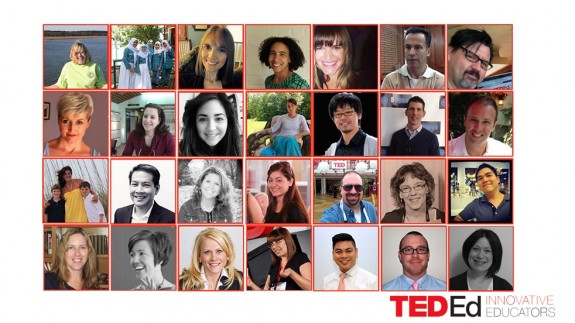
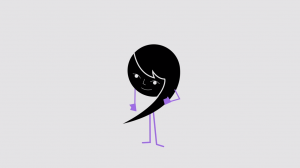
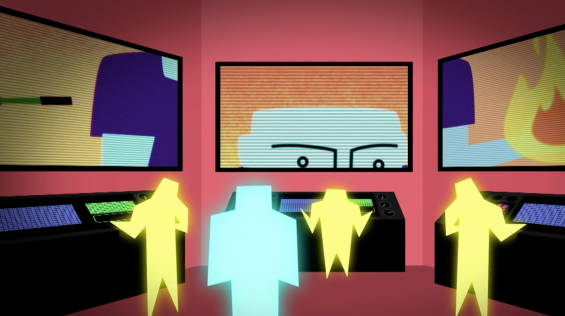
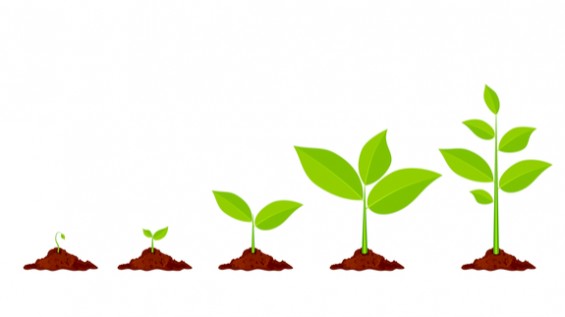
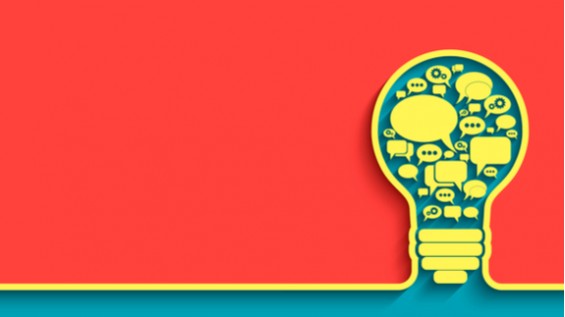
This is a great bit of inspiration that I happened across from my news feed this morning. Thank you innovators! We at the Institute of Meaningful Instruction are in the game of innovation through teaching self-management skillsets to students and parents. info@exploringtomorrow.org if anyone is interested in more!